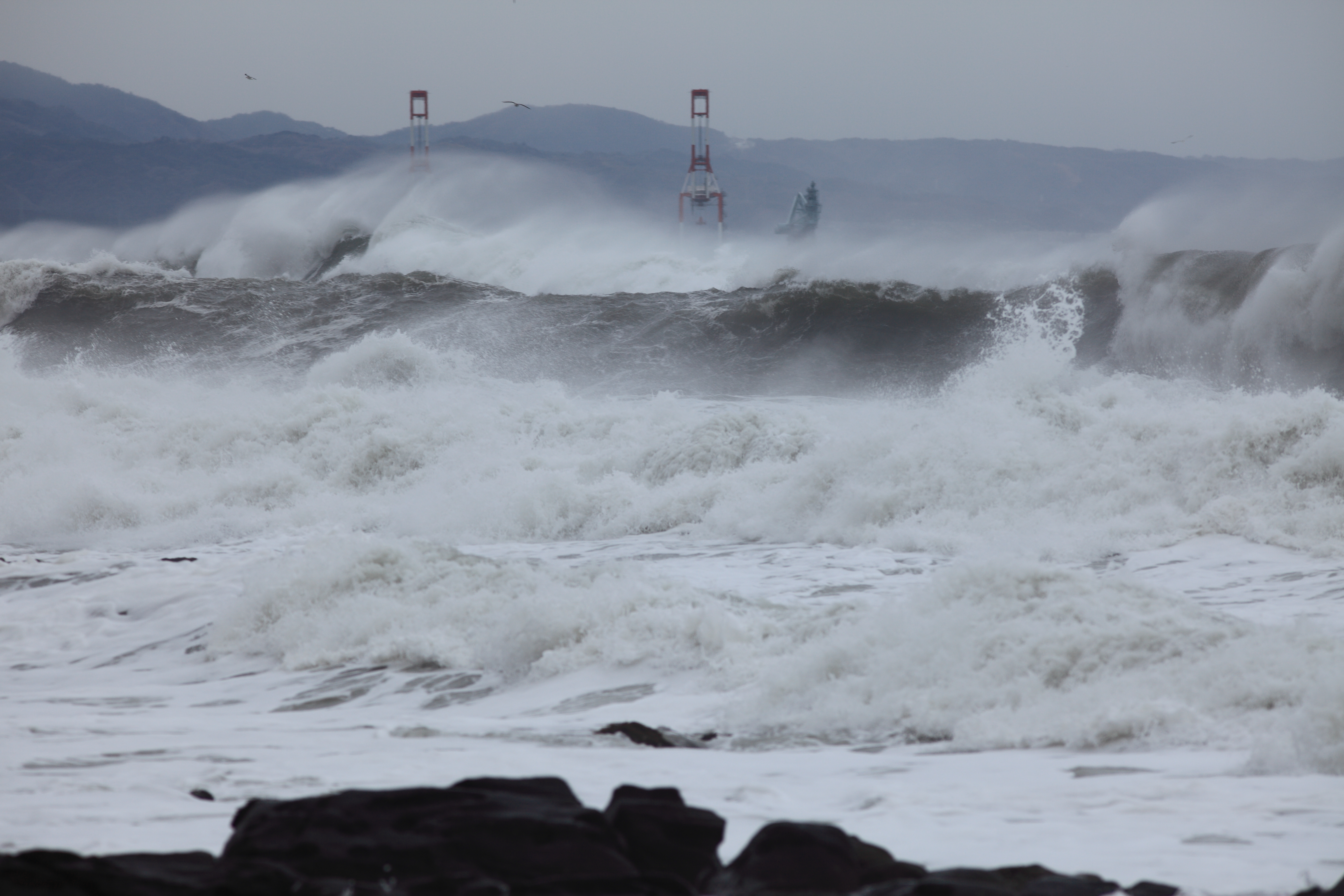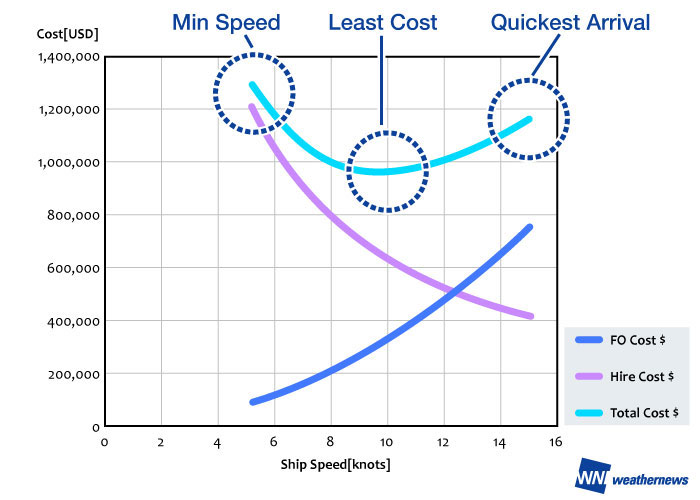News & Press Release
What do Increased Weather Risks Combined with New IMO 2020 Sulphur Regulations Mean for the Shipping Industry?
Shipping >Weathernews Inc. is fully ready to support customers needs regarding changes beyond the upcoming IMO 2020 regulations with cutting-edge weather forecasts and optimum routing solutions to save voyage costs and protect the natural environment.
SEVERE WEATHER AND NEW REGULATIONS
The gradual increase of severe weather conditions produces significant risks for voyage operations, and leaves operators and ship-owners more exposed to weather-related risks. According to Joe Swift, Operations Leader at the Weathernews Global Center in Japan: “rising air temperatures in recent years have led to more instability in the atmosphere, as well as an increase in the amount of water vapor that the air is able to hold. Coupled with the rise in sea temperatures also seen, allows more evaporation to take place. Taken together these two factors increase the amount of moisture in the atmosphere, which can cause more severe weather events. Some examples would be extreme rainfall events, which could affect shoreside (port) operations, as well as more powerful tropical cyclones, which affect not only ports but also ships at sea as well. While to date there has been no demonstrable correlation to a marked increase in the actual number of tropical cyclones forming, there seems to be a more frequent occurrence of very severe hurricanes and typhoons, which in turn lead to more extreme effects on the shipping industry.”
As the shipping industry is preparing for the new IMO Sulphur Regulations, effective January 1st 2020, several solutions have been considered by Ship Owners to comply with the new rules. Some Owners have invested in scrubbers for their fleet to be able to still burn HSFO and hopefully keep their current fuel costs, while other Owners believe that sufficient LSFO will be available in most ports and accordingly choose to pay a higher price for the LSFO and therefore saving the investment in scrubbers. There are pros and cons for both solutions based on our knowledge today and expectations for the future. However, regardless of the choice, there are increased costs involved and with that the industry may have to look at different operational voyage priorities to minimize the overheads.
Additionally, as described by Brad Navarro, Head of Global Voyage Planning Operations at the Weathernews Oklahoma Operation Center: “Shifted weather patterns and increased frequency of severe weather conditions could be potential impacts of climate change. When combined with more strict C/P weather clauses, it may become more difficult to present a performance claim due to a reduced number of “Good Weather Days.” As a consequence, Weathernews is encouraging operators to look at other ways to optimize voyages and save operational costs. Our RPM/speed optimization service is ideal as it uses a vessel-specific performance model to optimize speed in order to balance hire and bunker costs while ensuring a safe passage. With the expected increase in bunker prices as a result of the new IMO 2020 Sulphur Regulations, RPM/speed optimization service to balance hire and fuel costs will become even more valuable as vessel speeds generally reduce to minimize bunker costs, thereby adding sea passage days to the voyage and extending exposure to weather risks”.
HOW IS WNI SUPPORTING OUR CUSTOMERS TO MEET THESE CHALLENGES?
Investment in Forecast Technology and Big Data Utilization
For decades Weathernews Inc. has been at the forefront of the weather industry through innovative thinking. One such example is the launch of our own satellites to support sea ice navigation and the commercialization of the Northern Sea Route, through our Global Ice Center in Tokyo.
Investing in forecast technology increases our ability to issue more reliable route suggestions and simulation output, improving the safety of crew and vessel, and ensuring the most cost-efficient voyage plan. As the new IMO 2020 Sulphur regulations go into effect, slow-steaming to save expensive fuel will increase the number of voyage days at sea, increasing exposure to weather-related risks. More accurate forecasts will be imperative to minimize voyage cost as well as reduce weather-related risks.
Since Weathernews has a vast amount of actual voyage data for different vessel types in our database, we can offer these data to our clients to make better voyage estimates for chartering activities. These data consist of more than 1.3 million actual voyages spanning the past 12 years and are shared with clients to provide actual seasonal sea margins for many of the world’s major trade lanes. When combined with weather statistics for more than two thousand ports worldwide as well as actual ship-specific performance records of each client’s fleet, Weathernews gives access to more accurate voyage estimates.
Case Study: Increased voyage cost savings by instructing the vessel to sail at an optimal RPM/Speed balancing hire and bunker costs
Weathernews provides many tactical operational voyage priorities, which Operators can choose from. Recent studies by Weathernews demonstrate that finding the optimal RPM (or speed) to balance hire and bunker costs would benefit the shipping company to minimize the voyage costs under the new climatological and commercial environment.
By applying RPM (speed) optimization we aim to optimize both the route and the fuel allocation combined with the hire element, leading to overall cost savings for the voyage. As part of this service, our customers will, prior to commencement of the voyage, be presented with the route and speed options with corresponding ETA, fuel consumption and total cost figures for each route/speed to support the Operator’s commercial decision making.
Let us look at a couple of examples.
“Bulk vessel A” on a cross-Atlantic voyage was instructed to sail at warranted full speed and consumption. Had the vessel instead been instructed to do a lower speed balancing hire and bunker costs there would have been a potential savings of US$2,500 in voyage cost. When simulated assuming a 50% higher bunker price, an approximation of the effect of the IMO 2020 regulations on the market price of fuel, the potential savings could be as high as US$20,000 when compared to the total voyage cost associated with warranted full speed.
Conclusion: If a vessel is a good performer, making a performance claim unlikely, or there are potentially no “Good Weather Days” during the voyage based on weather forecast data, balancing hire and bunker costs through adjustments in speed can provide voyage cost savings. If fuel process go up by 50%, the value of such a speed adjustment is almost 8 times higher, which means a substantially higher savings in voyage cost compared to warranted full speed instruction.
“Bulk vessel B” performed an 11-day cross-Atlantic voyage and was already instructed to adjust speed to balance hire and bunker costs. The resulting speed led to actual demonstrable savings in voyage costs compared to the voyage performed at warranted full speed. If we again apply the anticipated 50% increase in bunker prices next year, the speed would need further reduction in order to balance hire and bunker costs. This reduction would lead to a potential additional savings of US$2,000, though for a short voyage.
Conclusion: For vessels already instructed to perform at a speed balancing hire and bunker costs, a 50% increase in fuel price could result in an even lower speed instruction resulting in increased voyage cost savings.
If “Good Weather Days” appear to be likely during a voyage Operators have, in some cases, monitored the vessel for the first several days to see if the vessel is performing as expected in good weather. If not, the ship Operator might change voyage instruction from warranted speed/consumption to optimal RPM/speed balancing hire and fuel costs in order to keep voyage costs to a minimum.
Teaming up with Performance Analytics Specialists
Apart from investments in forecasting technology, Weathernews is also engaging in partnerships with companies specializing in onboard route planning systems as well as performance analytics. This ensures that Weathernews always has the best and most accurate tools available.
Performance analytics is crucial to understanding vessel performance at sea. Weathernews collects navigational and performance data from vessels to ensure our vessel-specific performance model is calibrated frequently, allowing for the most accurate ETA and fuel oil consumption estimate based on the latest performance data and weather forecast.
By teaming up with industry-leading companies within the fields of performance analytics, our goal is to provide our customers with enhanced performance evaluations. These evaluations can be used to better understand vessel behavior and performance at sea, allowing for improved voyage optimization for a wide range of weather and business scenarios.
Environmental Reporting
With the introduction of new fuel regulations over the last several years, with both EU MRV and IMO DCS, Weathernews has supported our customers in complying with these regulations by offering services that support data-collection, data-cleansing and presentation of reports to relevant authorities. By doing so, we give our customers the time to focus on other operational matters and the many administrative tasks involved with their daily operations.
The introduction of ESI (Environmental Ship Index) SOx Reporting is the next step in which Weathernews will provide service. ESI is a collective initiative currently joined by more than 50 Port Authorities. The ESI initiative’s purpose is to incentivize the use of environmentally friendly vessels by using the ESI point-based system to provide financial discounts to reduce in-port costs.

